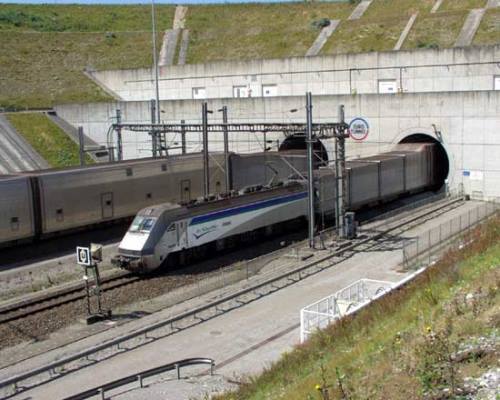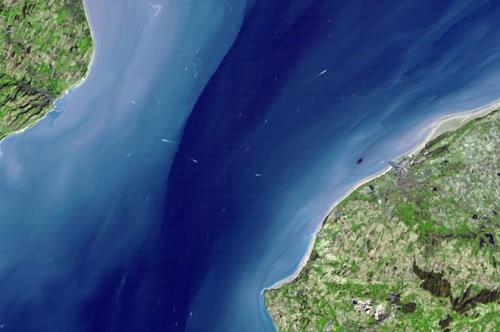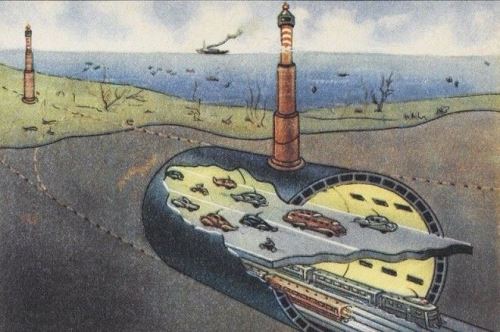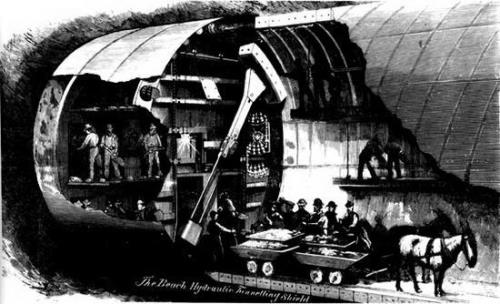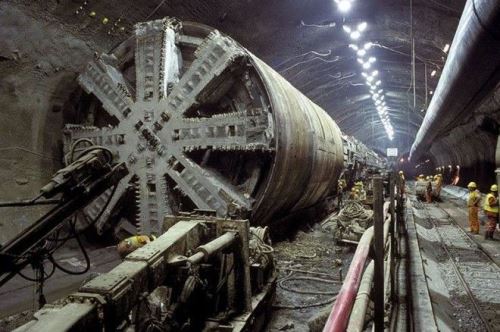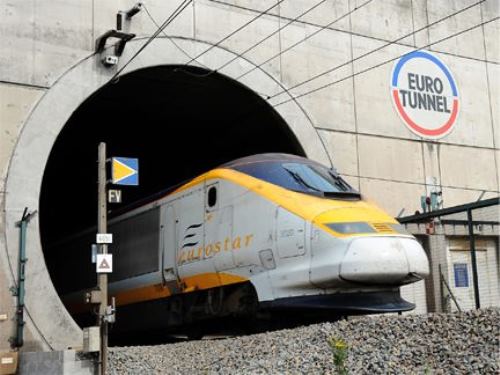Trains under English Channel
The Eurotunnel, or the Channel Tunnel, is one of the greatest buildings of the 20th century. The tunnel was opened on May 6, 1994. Eurotunnel connects the Foggy Albion, which for centuries was proud of its isolation, and continental Europe. Now the journey from London to Paris is a little over two hours. 20 minutes you will travel underground and under the ocean floor.
The width of la Manche, which in French means “sleeve”, or the English Channel, as the inhabitants of Britain called it, at the narrowest point between the English Dover and French Calais is 52 km. The depth in the fairway is about 25 m. At this point of the strait, they had long dreamed of digging a tunnel or building a bridge.
People thought about this in the 18th century, when a prize was instituted at the University of Amiens for someone who would present a tunnel project from France to England. Even then, digging the so-called gallery under the English Channel was considered a cost-effective enterprise, and no one doubted its reliability. One French specialist suggested not only dig, but also arrange the transportation of people in carriages. Also it was suggested to light the gallery by candles. To dig with shovels alone meant digging for decades, and to light with candles, it was necessary to build a special candle factory.
Emperor Napoleon was also interested in the idea of linking France and England with a tunnel, but King George III of Great Britain was in no hurry to give his consent. London was worried not about technical or economic issues, but political. The British did not want to let continental Europeans go ashore. They feared that the conservative foundations of the good old England would be violated. And they were right. Napoleon, abandoning a peaceful creative project, embarked on a military project – began to conquer the countries of Europe.
In 1880, France was an initiator of building a bridge across the English Channel again. In Europe, the era of internal combustion engines began. And many people wanted to travel by car from Paris to Foggy Albion. But the Prime Minister of England William Gladstone did not dare to approve the project. He was afraid that it would harm the national interests of England.
Nevertheless, at the end of the 19th century, both countries agreed that a tunnel should be built. And each of the parties, according to the agreement, began digging it. The British enthusiasm disappeared after laying 2 km, they stopped building the tunnel all for the same security reasons – London did not want to lose its island independence.
The First World War began and the Second World War followed. Finally, in 1986, British Prime Minister Margaret Thatcher and French President Francois Mitterrand signed an agreement to build a tunnel under the English Channel. Underground work began at the very end of 1987.
15 thousand engineers and workers of the two countries spent three years to make three tunnels under the ocean floor. They extracted 8 million cubic meters of soil and another three years were spent on technical equipment. Finally, on May 6, 1994, the tunnel was opened. Since the end of 1994, regular transport links between the UK and Europe began.
The total length of the Eurotunnel is 50.45 km, 38 km under the strait. Its lowest point is 114.9 m below sea level. This is the longest tunnel under the seabed. Despite the fact that this tunnel is inferior in total length to the Seikan tunnel (Japan), its underwater section is 14.7 km longer. And the Gotthard Railway Tunnel in the Swiss Alps is the longest in the world. Its length is 57 km.
Despite the fact that the Eurotunnel has many different engineering fire protection systems, a fire occurred on November 18, 1996. It began 16 km from France in a truck loaded with polystyrene. The driver stopped the train and began the evacuation of passengers. 36 people were seriously injured; fortunately, no one died. 70 firefighters replaced each other every 10 minutes due to the high temperature. As a result of the fire, 200 meters of the tunnel were seriously damaged, another 200 meters were partially damaged.
The second incident occurred on October 10, 2001, when one of the trains suddenly stopped in the middle of the tunnel. There was a panic among passengers. People spent about five hours underground until they were evacuated through a service tunnel.
On September 11, 2008, a fire broke out in the Eurotunnel. The fire started with a truck that was in one of the freight trains. The movement was immediately stopped. Tunnel personnel and drivers were evacuated, 14 injured were sent to hospitals. Six people have mild intoxication, and eight have minor injuries, such as scratches and cuts from glass.
Thanks to the Eurotunnel, you can get from Paris to London by train in just 2 hours 15 minutes.
